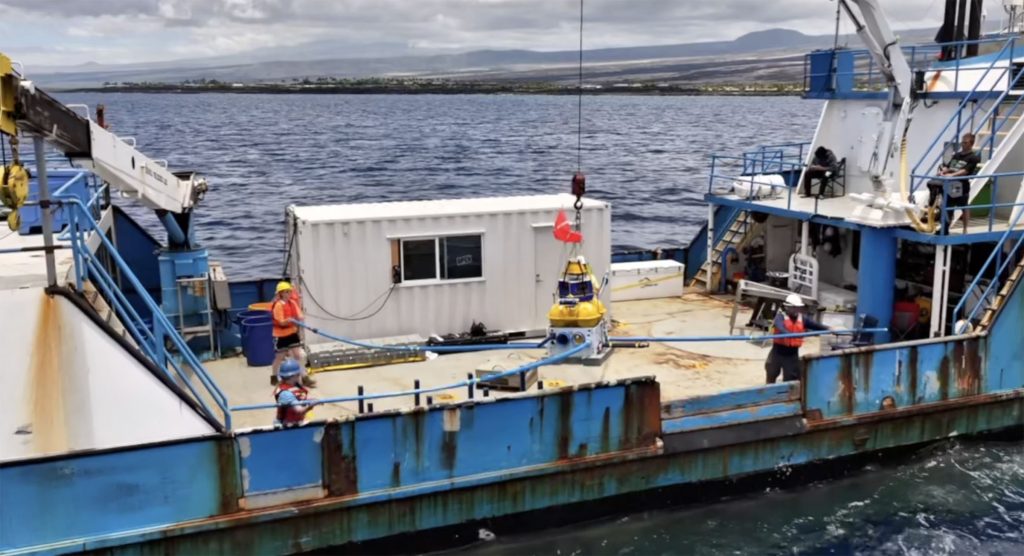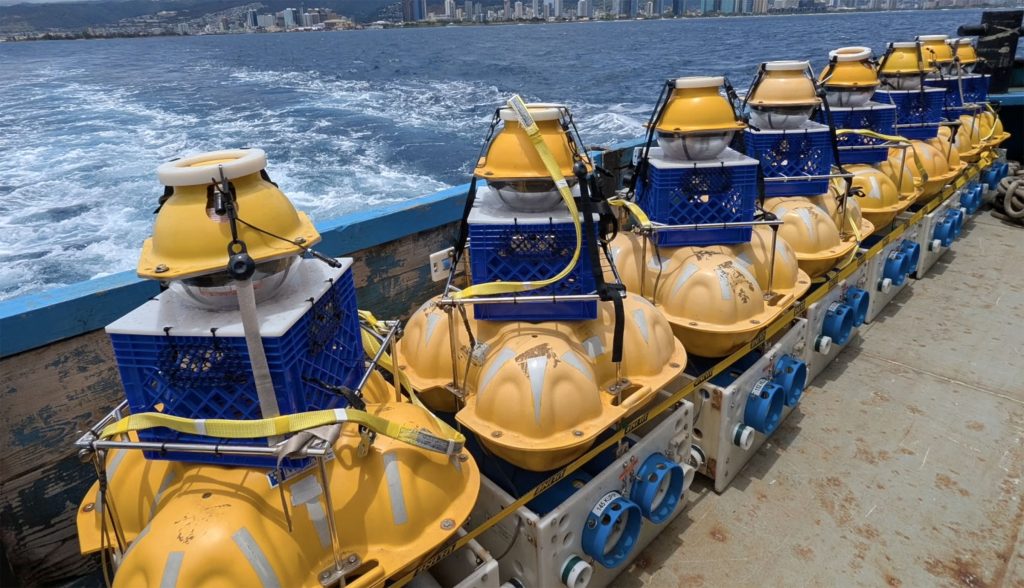A groundbreaking scientific expedition was just completed off the west coast of Hawai‘i Island in search of something unexpected – fresh water beneath the ocean floor.
Researchers from the University of Hawai‘i at Mānoa and Scripps Institution of Oceanography teamed up for a two-week offshore imaging survey in July 2025, through a contract with the Natural Energy Laboratory of Hawai‘i Authority and funding from the Hawai‘i state legislature.
 Scientists searching for fresh water hidden beneath the seafloor. (Drone footage credit: Kahiau Cates)
Scientists searching for fresh water hidden beneath the seafloor. (Drone footage credit: Kahiau Cates)
The goal was to confirm the existence of a potentially massive underground reservoir of fresh or brackish water hidden beneath the seafloor, challenging conventional understanding of island hydrology.
Peter Kannberg, an associate researcher at the Hawaiʻi Institute of Geophysics and Planetology in the University of Hawaiʻi at Mānoa School of Ocean and Earth Science and Technology, led the survey.
“If proven, this deep water could explain longstanding mysteries about Hawaiʻi Island’s water cycle—namely, why observed coastal discharge doesn’t match estimated groundwater recharge,” Kannberg said. “In simple terms, a lot of water is missing from current models.”
ARTICLE CONTINUES BELOW ADARTICLE CONTINUES BELOW AD
The roots of this investigation were established when scientists first detected anomalies suggesting a deep, confined aquifer where none should exist in 2018. The theory was that rainwater may be funneled underground and trapped beneath layers of volcanic basalt and ash, extending far beneath the basal freshwater lens and even miles offshore.
The basal freshwater lens is the layer of fresh groundwater that floats above the denser saltwater.
“The traditional model of freshwater on volcanic islands is you got this bathtub of freshwater underneath the island and that bathtub stops right at the shoreline,” Kannberg said. “What we’re finding though is that this freshwater extends offshore beyond where the model would predict.”
If a hidden aquifer is confirmed, the discovery could reshape the understanding of island hydrology and inform future water resource planning, which could help a region increasingly affected by drought and climate change, according to Alex Leonard, senior project manager for Natural Energy Laboratory of Hawai‘i Authority
ARTICLE CONTINUES BELOW AD
“If a significant fraction of freshwater is escaping through these deep aquifers, then we need to re-calculate how much water can can be withdrawn from the nearshore basal lens for human consumption and how much needs to remain in these shoreline aquifers to provide nutrients to the reefs and nearshore marine environment,” added Don Thomas, Hawaiʻi Institute of Geophysics and Planetology faculty who has spent decades studying water and subsurface features across the Hawaiian Islands.
 Scientists on their way to deploy instruments off the west coast of Hawai‘i Island. (Drone footage credit: Kahiau Cates)
Scientists on their way to deploy instruments off the west coast of Hawai‘i Island. (Drone footage credit: Kahiau Cates)
Using advanced electromagnetic imaging techniques, instruments were deployed on the seafloor to listen for electromagnetic echoes while a 150-foot-long towed sensor also emitted a low-power signal that was recorded on a 3,300-foot-long receiver array. The study spanned two areas: north of Kiholo Bay to Honōkohau Harbor and the coastline south of Kailua Bay to Kealakekua.
The team will now begin processing data from the surveys to determine whether this reservoir is present and better understand how much water may be in this hidden offshore aquifer.
“We are now applying state-of-the-art technologies to better characterize the complexity of island hydrology—advancing knowledge that could fundamentally improve how we manage and sustain freshwater resources across volcanic islands both here and abroad,” said Amir Haroon, faculty member at Hawai‘i Institute of Geophysics and Planetology, who studies water resources on O‘ahu and Maui.
ARTICLE CONTINUES BELOW AD
“The more we survey these, the more we study these, the question becomes not how do we find these and where are they? But where aren’t these?” Kannberg asked. “They seem to be a very prominent feature across all volcanic islands.”
For more on the project and answers to frequently asked questions, visit the Natural Energy Laboratory of Hawai‘i Authority website.
